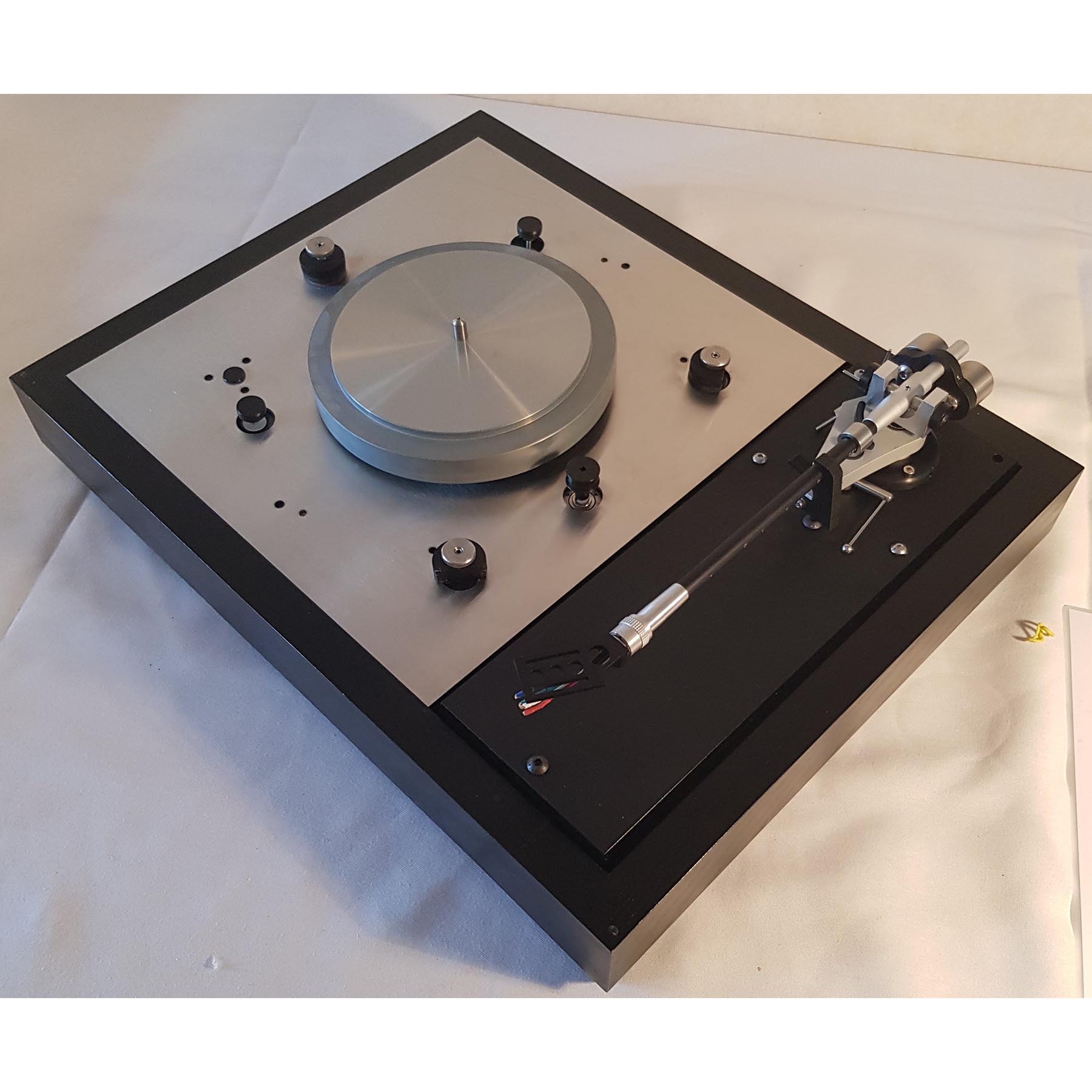Vector Link – “20/20” - ENFUNKATION of LP12

Funk LP12 20/20
Enfunkation”
You love your LP12. But however good you think it is, “Enfunkation”, a holistic, from the ground up, rebuild of LP12, has one singular aim: To turn your LP12 into one of the very best turntables around.
In doing so, it will expand your listening experience.
Clarity top plate: We start with the motor. Mounting it on the top plate is problem enough; siting it on rear left? Let’s put it politely: This is the absolute worst place to site the motor! It’s just plain nuts.
Your sound is permanently affected in not one, but two ways. Why do we say this?
Common to all decent turntables, your LP12 has a suspension, which in order to isolate, the chassis must move, not forgetting that all the while the motor stays anchored on the top. The relative motion between motor and chassis varies belt tension...And the speed? It can’t ever be stable.
“Isn’t “cable dressing” meant to stop this?” Only partially and only by shorting the suspension! Pretty pointless really.


Top Plate enables vector drive and lower left positioning of motor.
Having dealt with the top plate itself, things now only get worse. Let us accept the suspension is isolating, at all frequencies. How is it we still find low frequency vibrations (up to 500 Hz) from the world outside are able, continuously, to reach your stylus? - Make no mistake, they do.
It’s the belt. It’s connecting the plinth / motor (outside world) to the platter (the busines end).
Imagine it this way:
If the motor pulley were to be off-centre and wobble, the platter itself would now wobble and directly opposite the motor is the cartridge mounted on an arm, free to move left and right. The wobbling platter causes the cartridge to wobble side-to-side generating the unwanted low frequency output and it is heard.
The ultimate solution (& there is only one):
The motor HAS to leave the top plate forever to take up a new home on the sub-chassis. This places new demands on motor and drive quality, K-Drive’s class A, single-ended design can’t be bettered.

Conventional motor drive pulley position left – causes vibrations perpendicular to the groove. Changing position to lower left eliminates this effect – improving sound.
1: Chassis mounting, the record is isolated at all times- No LF junk.
How smooth is K-Drive’s motor? Hold it in your hand. Switch it on and off. You can’t feel which is on or off and nor does the stylus!
With “Motor-Record-Stylus” all moving “as one”, music is delivered with absolute rock-solid stability.

2: Vector Drive: Linn’s sole patent on LP12 is the oil-filled bearing. It works because of its gap, which has a down-side: The pull from belt tension. The gap allows the pull to tilt the platter towards the motor, which as it rotates, it must constantly re-position itself in the gap resulting in uneven rotation. The bearing scrubs. You get the famous bearing wear!
Funk’s 3-pulley Vector Drive.
Vector Link “20/20”’s solution supports the platter all-around. Once steadied, the pull is balanced, the platter can now rotate more evenly about a single point.


3: Supporting the record correctly:
Like a pile-driver, the stylus vibrates the groove causing an echo and colours the sound.
Supporting the record, the mat is the ONLY component able to deal with them (What else is there?) It’s role is in fact as critical as it gets. Achromat is designed to sink stylus-vibration energy, dissipating it as heat. Any wonder Achromat’s structure is complex. Achromat is the best entropy device.

4: The sub-chassis. As cars become more capable, manufacturers design better chassis. It’s no different for turntables. Vector Link “20/20”’s chassis combines 10 individual disparate elements, each performing a different task: From supporting the motor, the suspension, Vector Drive pulleys, to maintaining the arm-record relationship: With a Young’s modulus (stiffness) double that of aluminium, this component accurately maintains the relationship between arm and record.
With so much rigidity, the energy has to go “somewhere”: Housed within the chassis is another energy sink to prevent reflections and keep the sound pure - Further entropy in action.
5: The arm: What’s the point going to all this trouble with the deck if the arm sings along with the music? Review after review says they do! This isn’t esoteric audio. Given proper A-B comparisons these differences are all too easily heard. Quite simply, the arm is the weakest link and price provides little in the way of assurance to performance.
Awarded “Tonearm of the year 2019”, Funk’s F.X arms are a rare exception. FX3 is a perfect match for Vector Link “20/20”. Compared to the more usual 20-30dB peaks found on most arms, FX3’s meagre 6dB peak delivers a sweet open and natural resolution with tactile low frequencies.
2020 saw the release of Houdini, the ultimate device to retrieve information from your groove.

Funk FX3, preferred Enfunkation option for best performance.
Mounted on your 20/20GL with FX3, this is what you can expect:
“I added a Houdini yesterday. I can't remember the last time I made any kind of upgrade (including equipment) that made me want to listen to ALL of my records again, but that's what the Houdini has done. Transformative.“
Just listen and hear why they keep winning awards. Again this can be heard in Catford.
6: You.
From all the design and technology, it is self-evident that purity of sound is paramount to Vector Link “20/20 ”. Lift the platter, however, and there is one more altogether radical innovation:
Vector Link “20/20” now also looks after you, for it sports a totally new suspension: It hangs!
Pendulum-esque, this clever “Set-&-forget” suspension means: “You set”, then “You forget”.
It is pre-aligned and stable by design. All adjustments are carried out from above, (there’s no getting underneath), thus it requires no jigs or tools. All the while, the original bounce is retained.
You are free to re-adjust your deck anytime you choose, confident that the inherent stability means it won’t go out of tune. Literally a couple of minutes...and you’re done.















